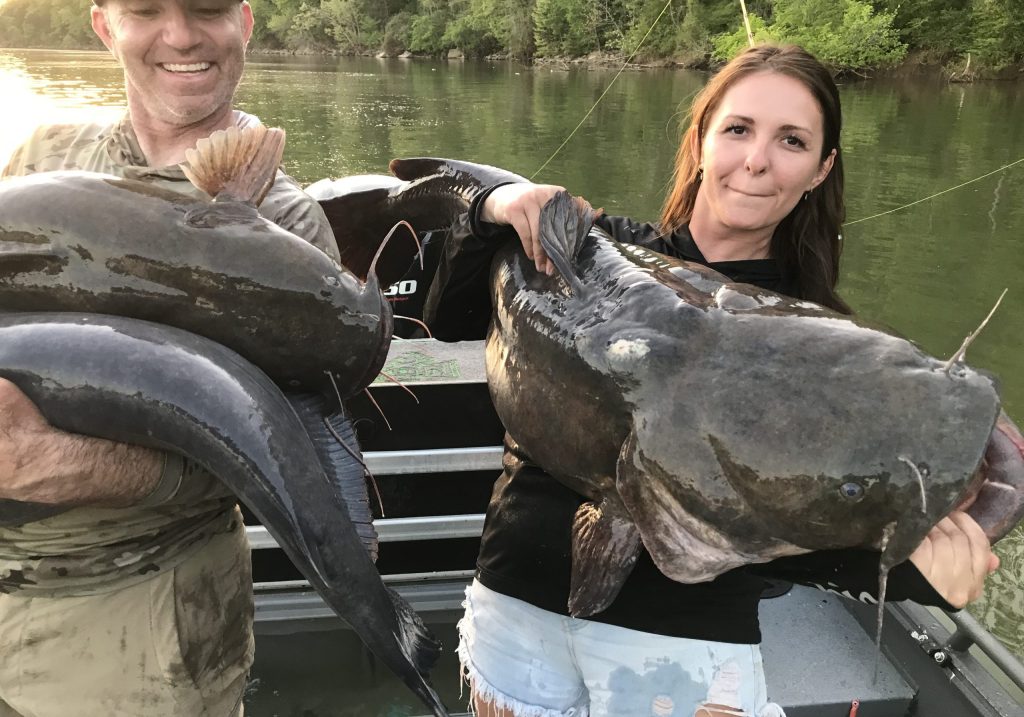For some fishermen, there’s nothing like straining against a rod that looks like a capital C and listening to your reel whine as a potential trophy peels line off the spool. But for many other fishermen, sitting on the bank of a lake, pond, or river and watching a couple of rod tips is just fine. So, what fish in our state requires a stout rod, smooth drag, and a strong line? Two species of catfish that reside in many of our state’s rivers and reservoirs will test your equipment and back muscles. However, any of our catfish species will provide an excellent excuse to tie the best catfishing rig, dig a few worms and head to the nearest creek, pond, or river.
Types Of Catfish
Alabama has a reputation for serving plates full of “Southern Fried Chicken” and some great barbecue. However, for many, summertime also means paper plates and a platter full of catfish and hushpuppies.
Five different catfish inhabit our state’s waterways, and each will provide a good fight and fine meal. Our largest whiskered fish is the Blue, followed by the Flathead.
Several types of Bullhead, Channel, and White catfish also share the waters with our larger specimens. They each have eight whisker-like appendages surrounding their mouths called barbels. These slender tentacles are full of receptors to help them feel and smell/taste potential food at night and in muddy water.
Fishing for any species of fish can be fun and catfish have provided generations of Alabamian’s food for the table and an excuse to take their shoes off, plunge a forked stick into the ground, and sit on a riverbank.
Best Bait For Catfish
Because catfish are relatively easy to catch and plentiful, they have garnered a prominent place on many home and restaurant menus.
I’ve seen, used, and heard of some unusual baits used to catch a catfish. Among them are soap, cheese, congealed blood, chicken livers, corn, onion, muscadines, hotdogs, deer meat, dog food, leftover hamburgers, shrimp, birds, frogs, and roadkill. Most catfish scavenge along the bottom for a variety of food, both live and dead.
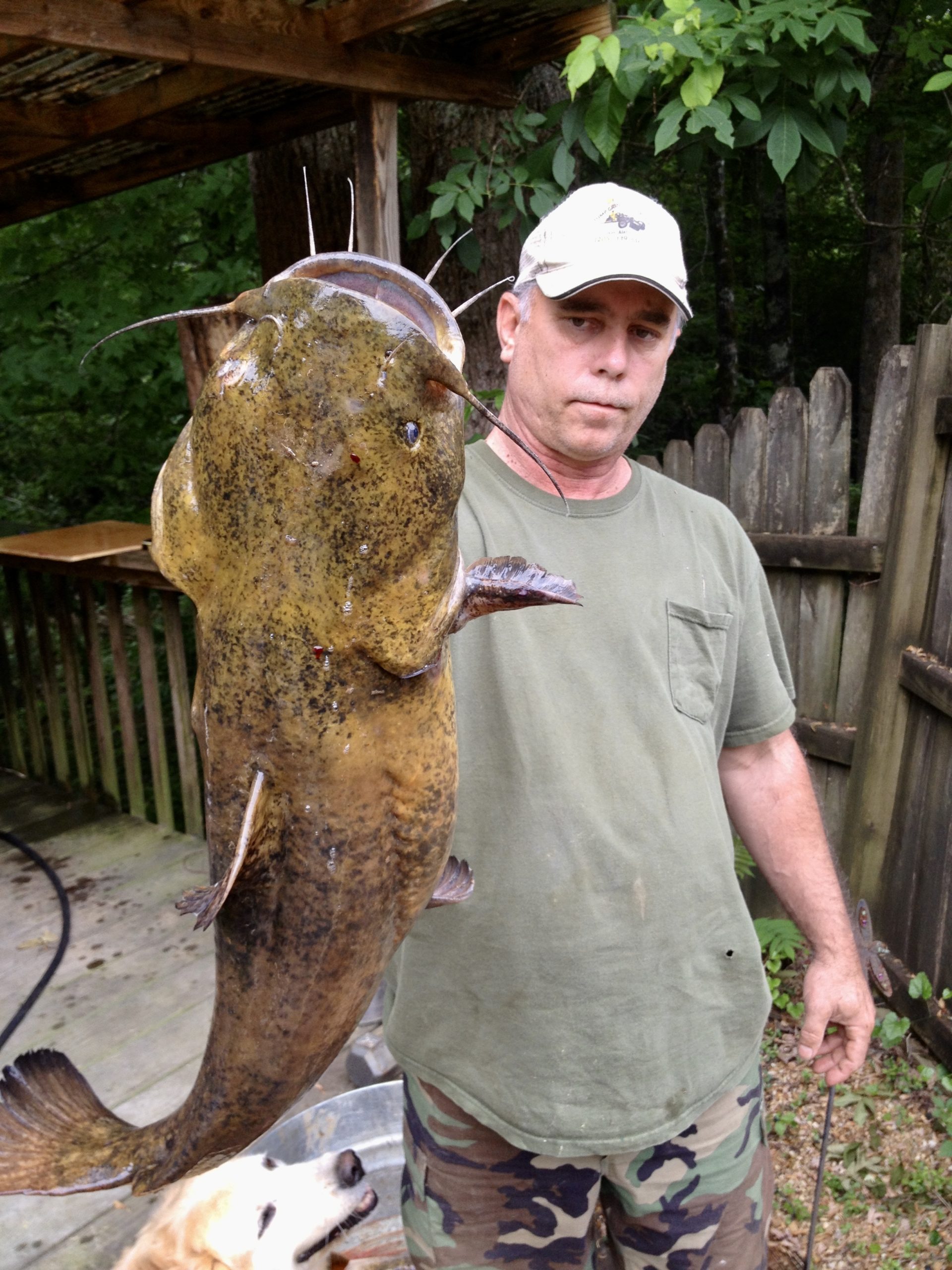
Though the Flathead is considered a predator and often caught on live bait, it too can be regularly enticed with fresh cut bait.
Catching any catfish is a relatively simple matter. First, position your bait in a likely spot and keep it where active cats can find it. Baits suspended under corks near the surface or lying on the bottom anchored by a weight will all catch fish.
Keeping your rig simple means fewer components to fail, knots to break, and a weight that won’t interfere with a natural presentation. In addition, they’re easier to tie, cast, and quicker to redo if broken off or abraded.
Locating Catfish
Like any other species, catfish tend to hold near trees or rocks. In water between 40-50 degrees, position your bait in deeper water near depressions, humps, or structure.
I asked Capt. Mike Mitchell of SouthernCats Guide Service a few questions about his methods and the best catfishing rig and baits to use when fishing for larger fish. Mitchell is a nationally recognized catfish guide and successful tournament angler with years of experience locating and catching giant catfish.
Mitchell said that in the late fall, winter, and into spring, he mainly uses a trolling motor with spot-lock to maintain his boat’s position.
“We locate underwater humps and depressions and also target trees or rocks. In addition, we rely on my Humminbird Side-Scan to target specific big fish that appear on the sonar,” Mitchell said.
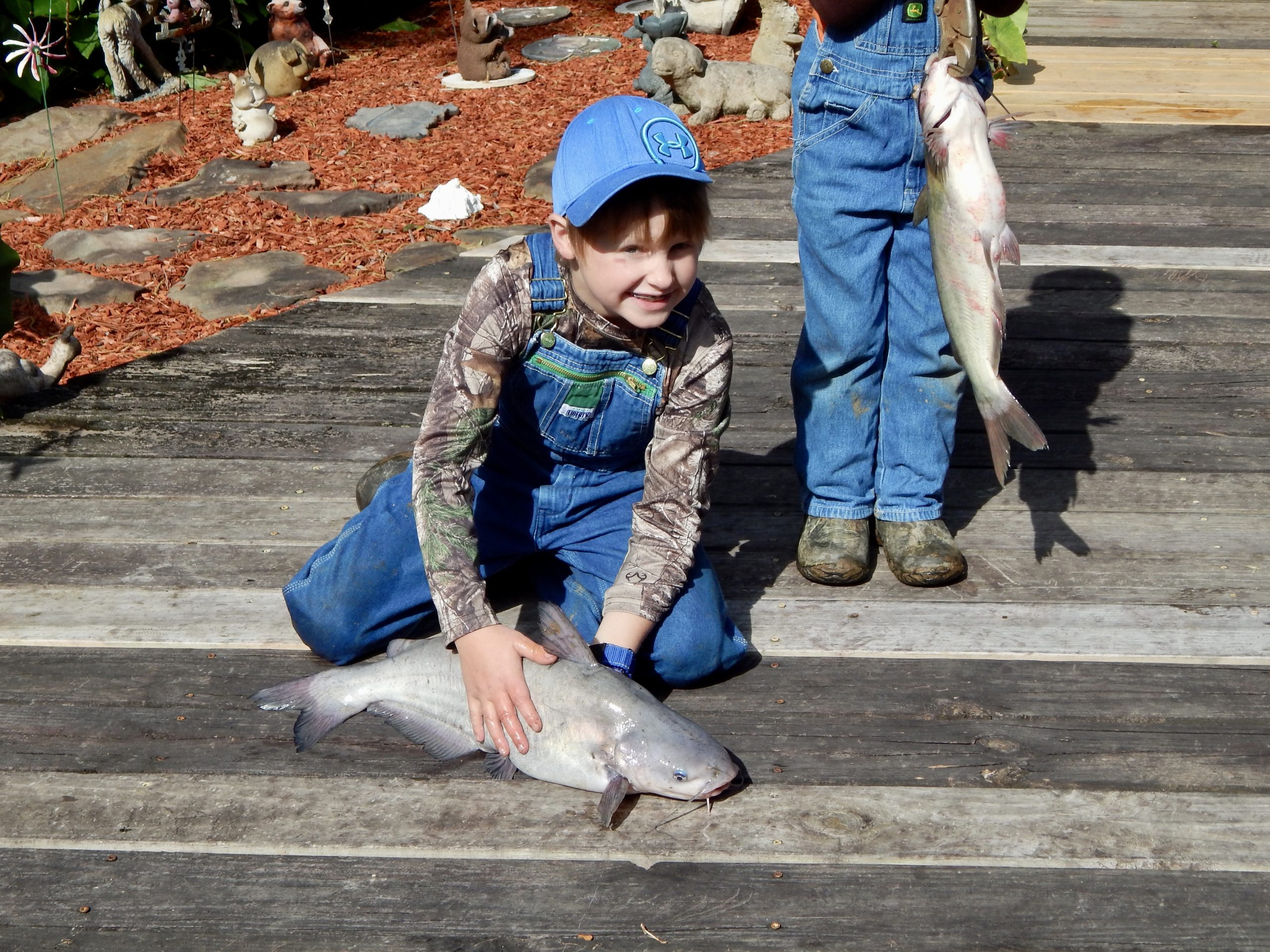
Mitchell’s usual method involves a “run & gun” approach where they sit on the fish or structure for about 20 minutes, then move to scan more likely locations and set up again.
He said heavy currents concentrate fish, and often minor adjustments to bait presentation will produce more bites.
Best Catfishing Rigs
Larger Fish
Mitchell described his primary setup for the larger fish they target.
“We use a standard slip-sinker rig with sinker slides that allow us to attach whatever size weight is needed to sink the bait and keep it in place. Often we use no weight in lakes and 8-12 ounces or more in rivers with a heavy current,” he noted.
He said they use Shimano 200 Charter-Special reels attached to heavy-action Catch the Fever Big Cat Fever rods.
“We use 40lb mono-mainline (Slime Line) with a sinker slide attached to a 1/0 Crane swivel. We tie 7/0-10/0 Boss Cat circle hooks to a 100 pound test mono leader for abrasion resistance from sharp teeth and the rough cover we fish,” Mitchell explained.
He said that depending on where the fish are holding, they occasionally use a three-way swivel to float bait off the bottom, but the standard hook/leader/swivel/weight setup is their go-to rig for most situations.
Smaller Fish
Downsizing your line, sinker weight, hook size, bait, and rod/reel combination is the main difference between catching a five or a 50-pounder.
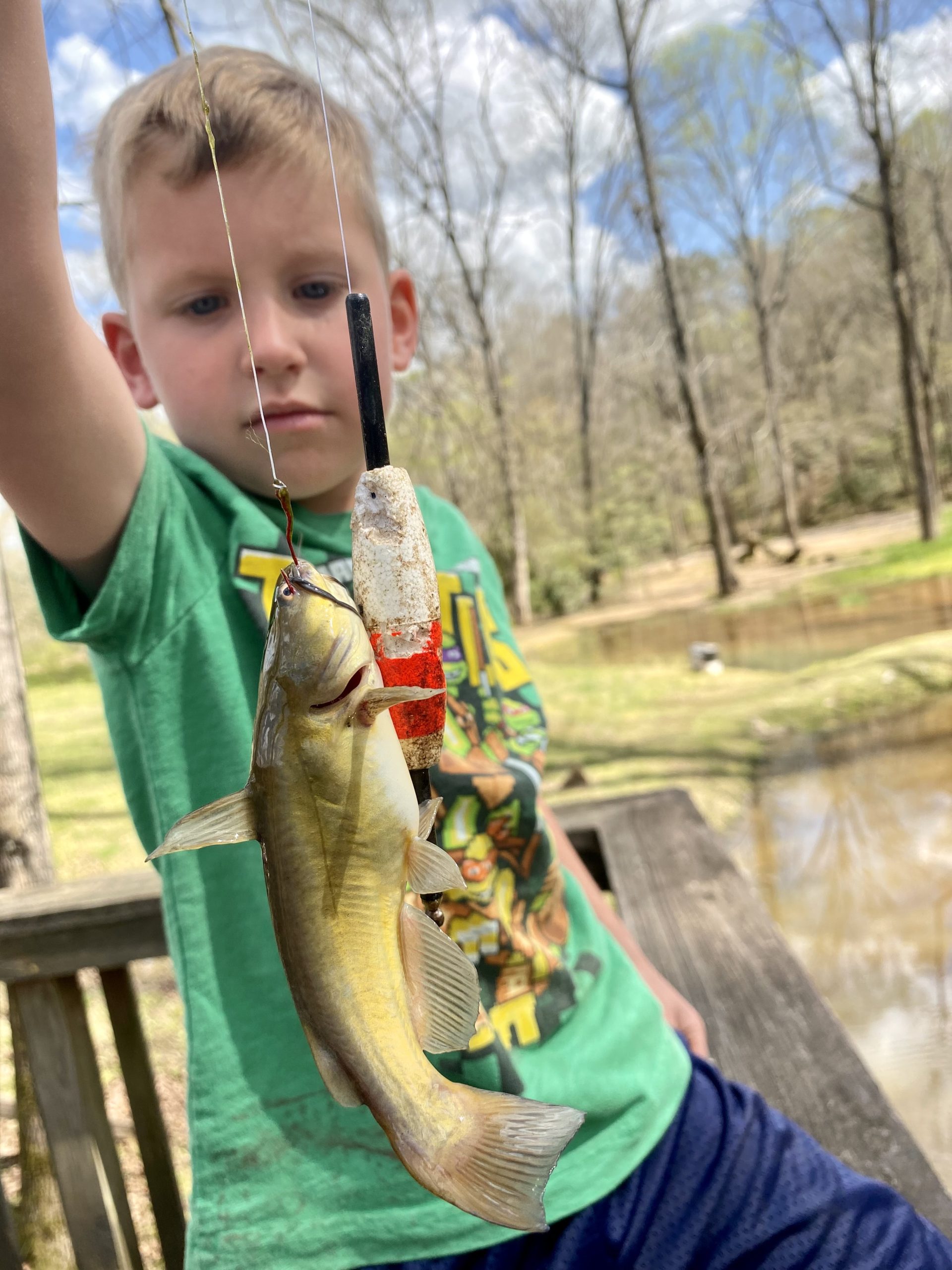
The lake or river will influence the rig and bait you use. Commercial or homemade stink baits work best with treble hooks. Worms, live or cut bait, all work well with circle, Kahle, and J-hooks.
Hooks
Treble– Commercial and garage-blended stink baits work well with treble hooks. However, depending on your concoction’s stickiness, a small sponge or a bait-holder hook might be necessary. A #6 treble works well for average-sized cats, but if your fish are consistently gut-hooked or you get into larger fish, switching to a #4 is a good choice.
Kahle or J– These are good for holding cut or live bait, and 2/0 to 4/0 works fine for most channels.
Circle– These are a self-setting type hook. Many guides use this type when targeting trophy-sized fish to help prevent gut hooking. It’s the best choice when practicing catch and release. 2/0 to 4/0 are good selections for channels.
8/0 to 10/0 sizes are the preferred hook for larger blues and flatheads because of their tendency to lip hook. However, learning the hook set can take practice because waiting for the line to tighten works better than snatching.
Big Baits
“Most of the baits we use are cut to hand-size or fished whole. We sometimes just cut the tail off or slit the sides of smaller bait, and we typically change baits every 30-45 minutes,” Mitchell. said. “We use fresh cut bait and often use skipjack herring, gizzard shad, and mooneye when fishing the Tennessee and Mississippi Rivers.”
Mitchell targets both flathead and blues with cut bait on the best catfishing rig. He said it works best for flatheads in the spring before the spawn because afterward, they don’t catch many flats again till late March or early April.
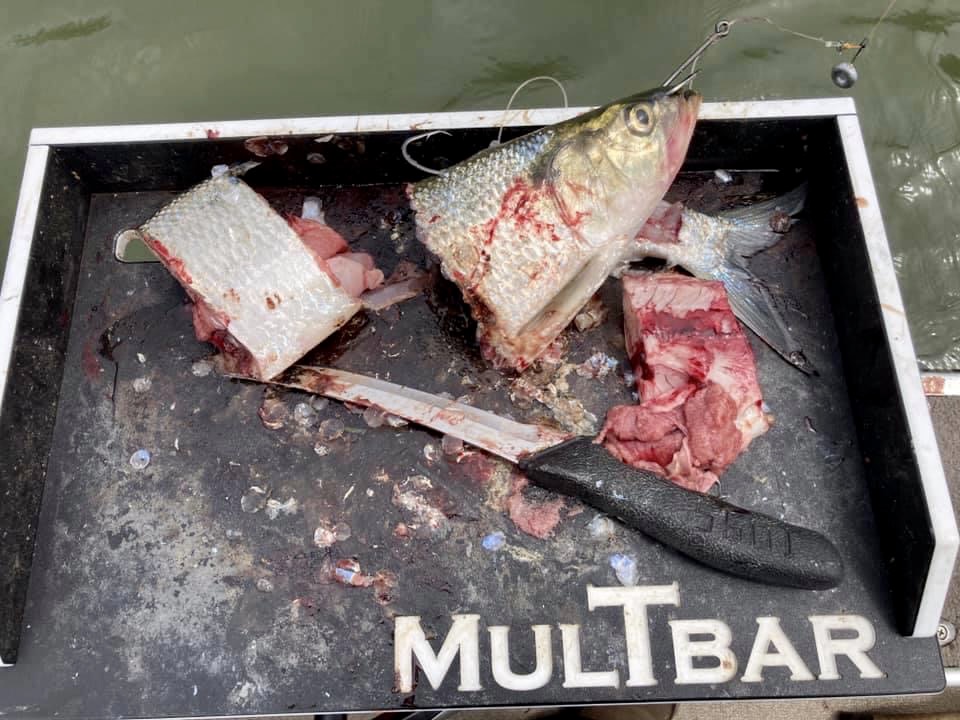
He primarily focuses on the Tennessee River but heads to the Mississippi River in the Summer and Fall.
“We occasionally travel to the Ohio River and a few lakes like Santee for major tournaments,” added Mitchell.
Water Temps/Activity
In winter’s cold water, 40 degrees or less, large numbers of fish will gather in deeper sections.
Catfish slowly disperse from the deeper holes to midrange depths as water temps rise.
Fishing can be excellent during pre-spawn as fish feed in preparation for nesting. (61 to 68 degrees)
The spawn typically occurs between 69 and 73 degrees, and fish become harder to catch.
Post-spawn is a great time to fill your cooler, so check those water temps and be ready to sling some bait as temps reach 74-75 degrees.
Bank Fishing Rigs
Ponds
A good spinning reel with a 12-20 lb test line and enough weight to keep your bait still is good enough to catch average-sized catfish. Most fish will be in the deeper sections or near the dam during daylight hours.
Sometimes a slow-sinking bait with no weight will help you discover how deep the fish are holding. Then a simple switch to a slip cork set at the appropriate depth can be effective.
Rivers
For the best catfishing rig, flat sinkers attached to a slider above a crane swivel are needed to keep your bait from rolling with the current, so a good selection of weights is critical for river fishing.
Most river systems are home to larger blues and flatheads but also have a good population of Channels. They also contain plenty of logs and underwater debris, which is great for holding fish and snagging hooks.
A 3-way swivel and drop-rig can help avoid hang-ups by keeping your bait off the bottom. Reeling a fairly heavy bare weight slowly across the bottom of your prospective fishing spot will allow you to feel for any obstructions and help you decide what rig to use.
Final Thoughts
So, gather a few hooks, crane swivels, weights, and sinker slides to make the best catfishing rig. Then get a few frozen shrimp or some stink bait and head out to your nearest fishing hole soon.
Full Disclosure: This post may include affiliate links. There’s no extra charge to our readers for using these.

